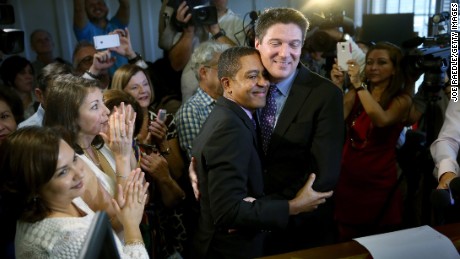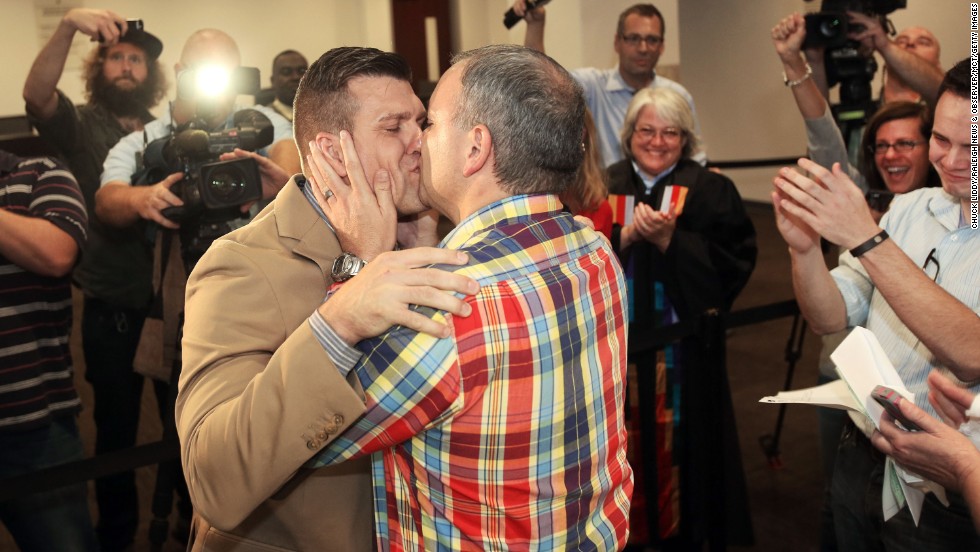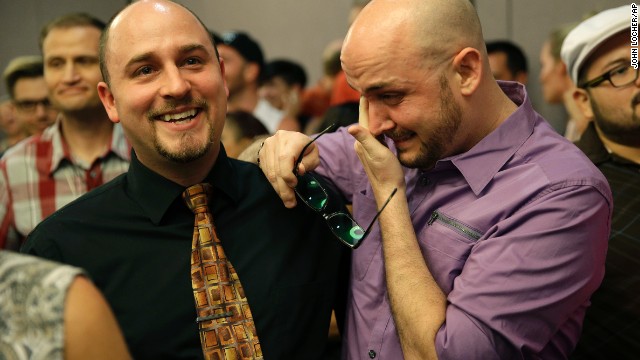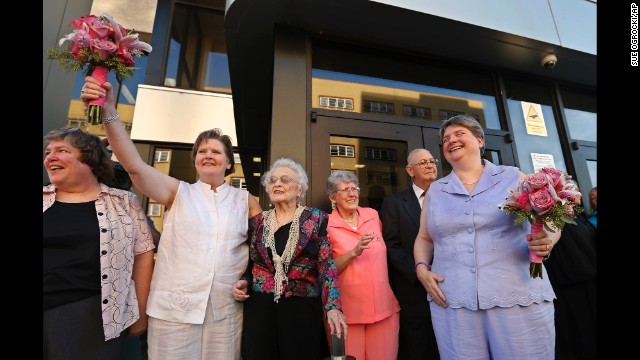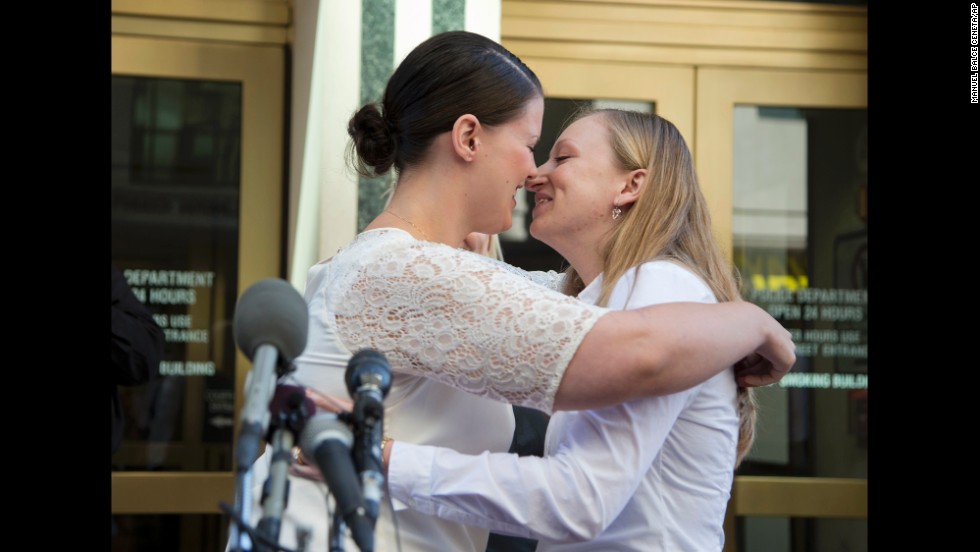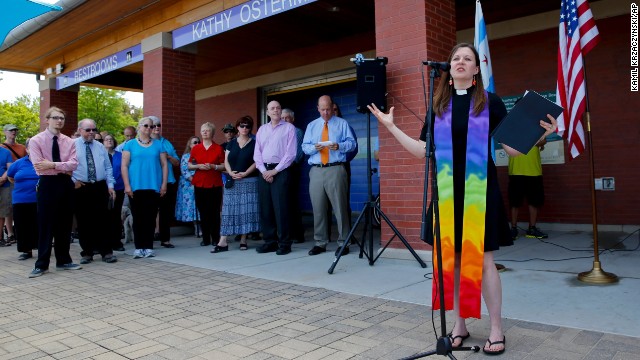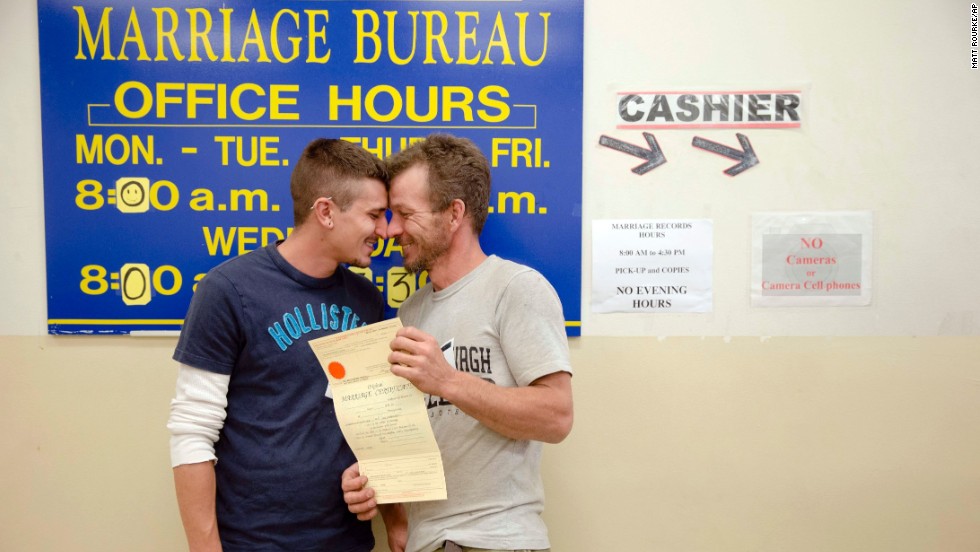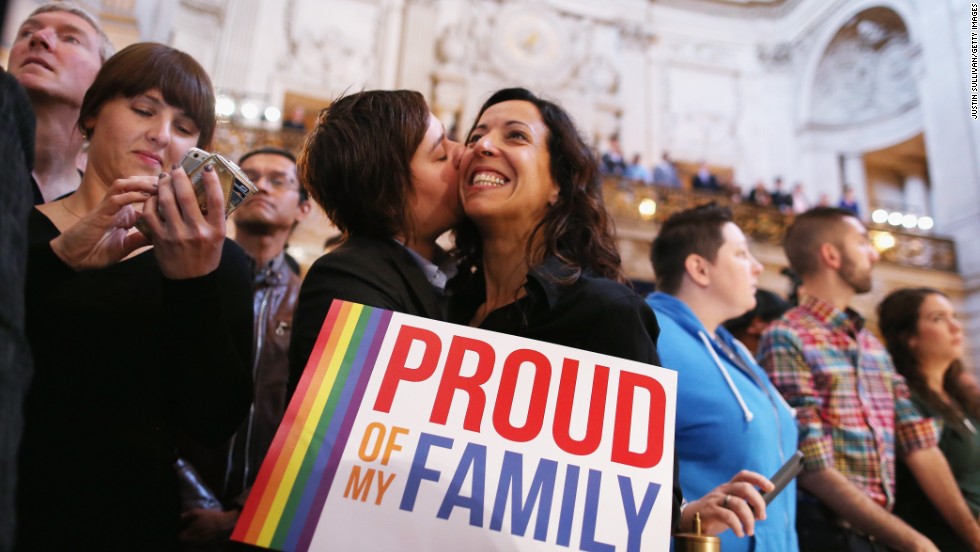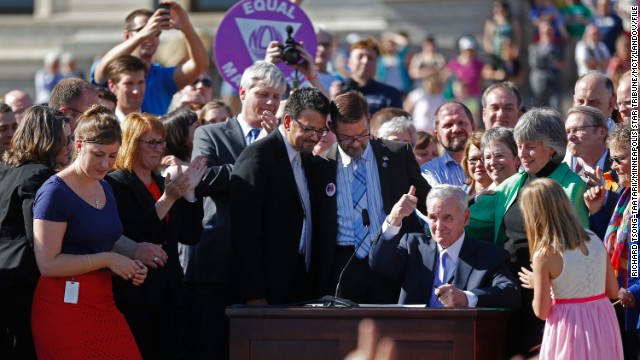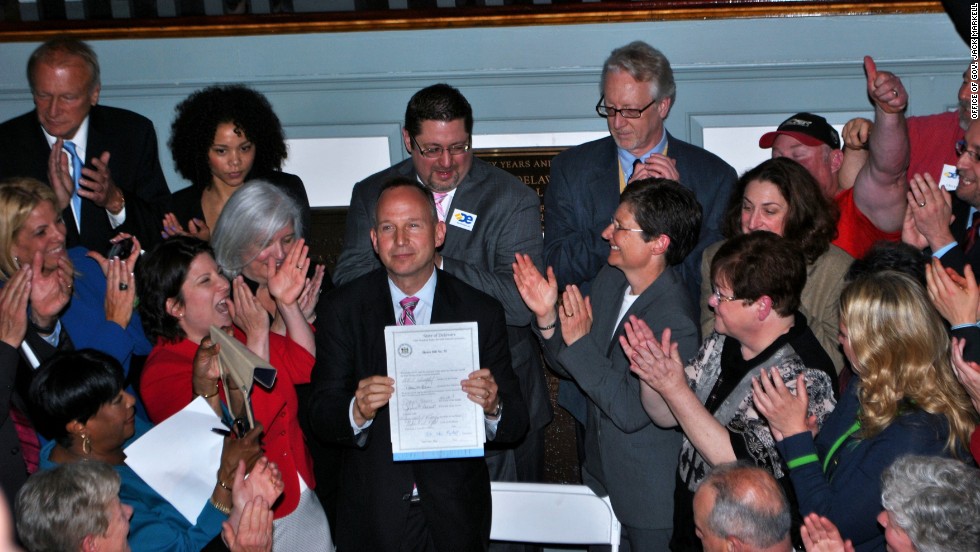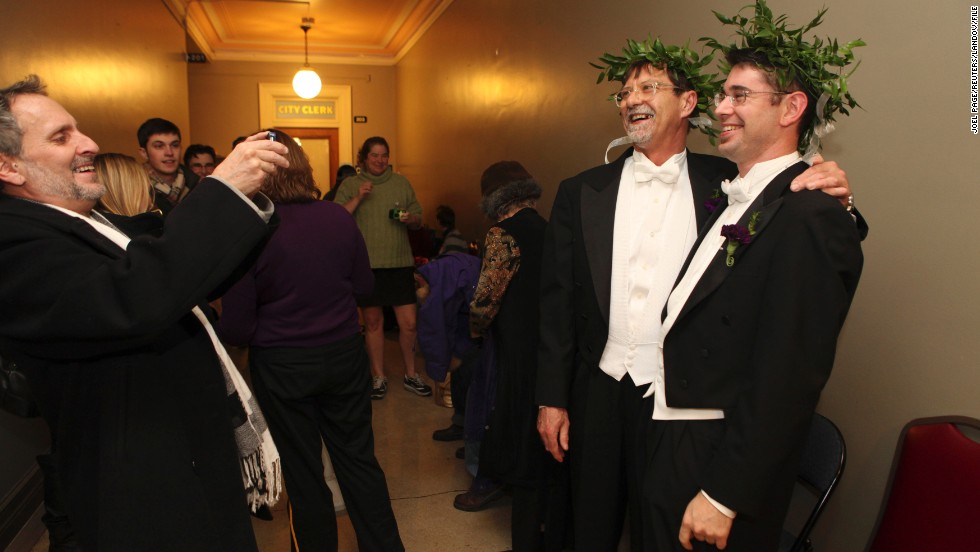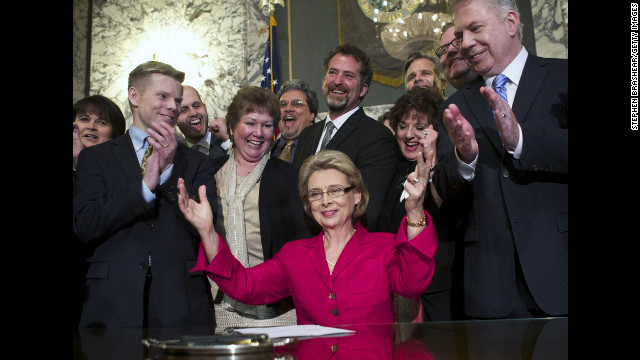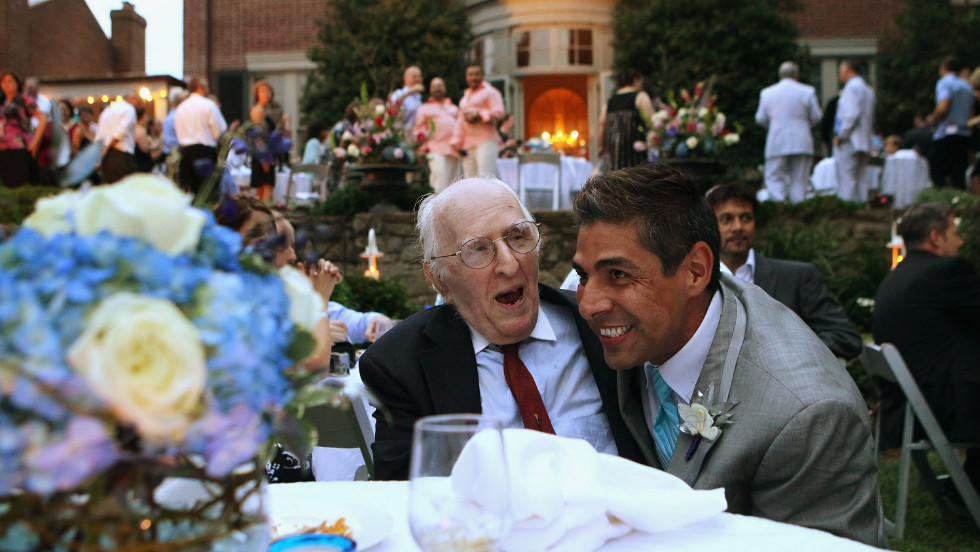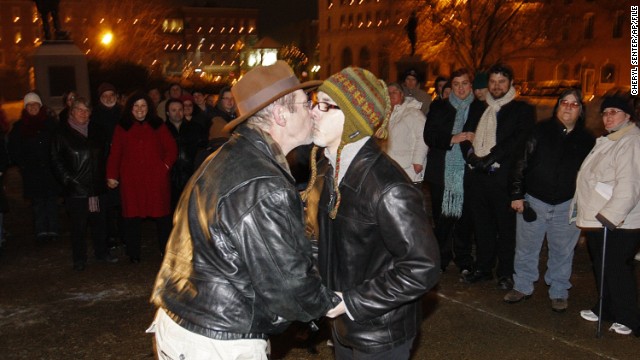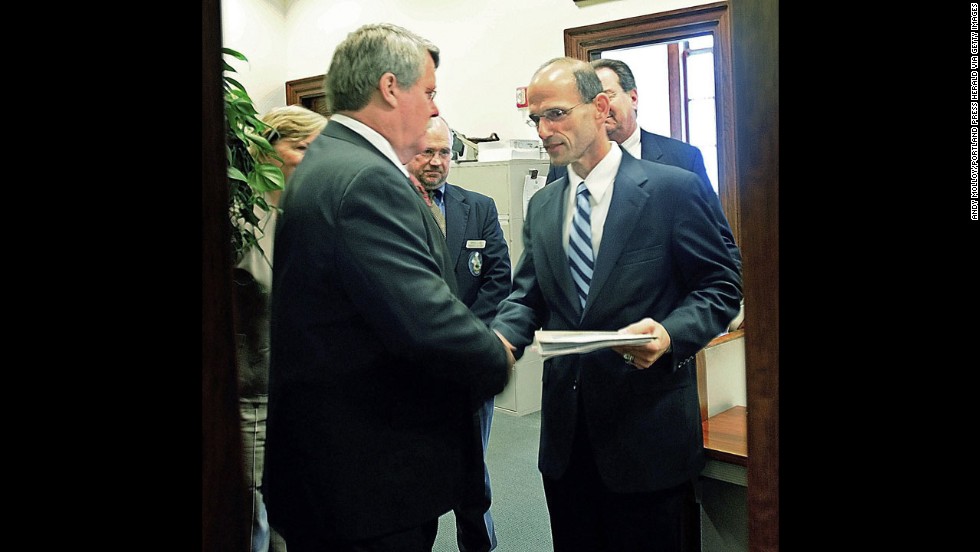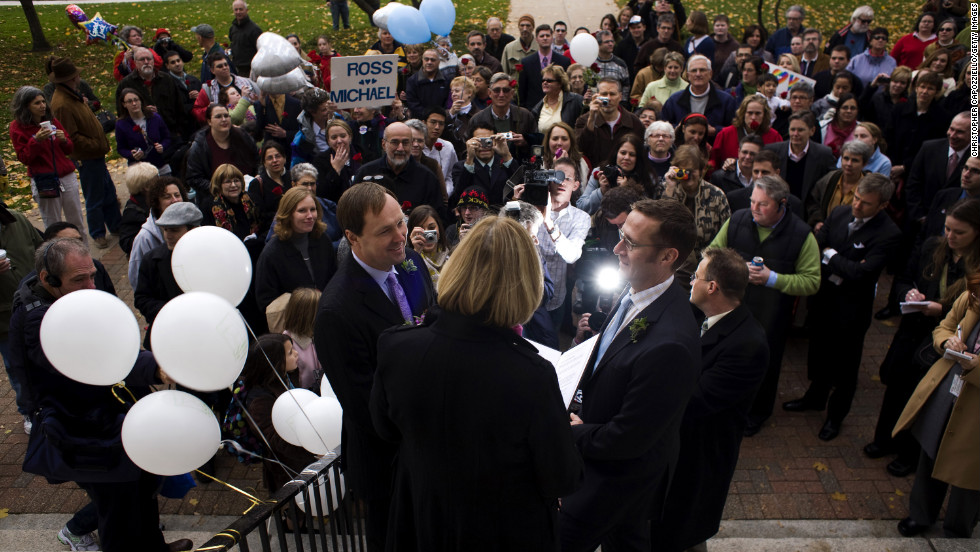Same-sex marriage in the U.S.
Same-sex marriage in the U.S.
Same-sex marriage in the U.S.
Newlyweds Jeff Delmay and Todd Delmay hug during a marriage ceremony in a Miami courtroom January 5, 2015. Florida began allowing same-sex marriages after a federal judge struck down the state's ban.
Same-sex marriage in the U.S.
Chad Biggs, left, and Chris Creech say their wedding vows at the Wake County Courthouse in Raleigh, North Carolina, on October 10, 2014, after a federal judge ruled that same-sex marriage can begin in the state.
Same-sex marriage in the U.S.
Joshua Gunter, right, and Bryan Shields attend a Las Vegas rally to celebrate an appeals court ruling that overturned Nevada's same-sex marriage ban on October 7, 2014.
Same-sex marriage in the U.S.
From left, plaintiffs Moudi Sbeity; his partner, Derek Kitchen; Kody Partridge; and Partridge's wife, Laurie Wood, celebrate after a news conference in Salt Lake City on October 6, 2014. The U.S. Supreme Court cleared the way for same-sex marriage in Utah when it declined to hear the state's appeal of a lower court ruling.
Same-sex marriage in the U.S.
Abbi Huber, left, and Talia Frolkis exit the City County Building in Madison, Wisconsin, after applying for a marriage license on October 6, 2014.
Same-sex marriage in the U.S.
Rob MacPherson, right, and his husband, Steven Stolen, hug during a news conference at the American Civil Liberties Union in Indianapolis on October 6, 2014.
Same-sex marriage in the U.S.
Mary Bishop, second from left, and Sharon Baldwin, right, celebrate with family and friends following their wedding ceremony on the courthouse steps in Tulsa, Oklahoma, on October 6, 2014.
Same-sex marriage in the U.S.
Jennifer Melsop, left, and Erika Turner kiss after they were married in front of the Arlington County Courthouse in Arlington, Virginia, on October 6, 2014.
Same-sex marriage in the U.S.
Pastor Carol Hill from Epworth United Methodist Church speaks during a marriage-equality ceremony at the Kathy Osterman Beach in Chicago on June 1, 2014. The date marked the first day that all of Illinois' 102 counties could begin issuing marriage licenses to same-sex couples.
Same-sex marriage in the U.S.
William Roletter, left, and Paul Rowe get close after having their photo taken with their marriage certificate May 21, 2014, at Philadelphia City Hall.
Same-sex marriage in the U.S.
Julie Engbloom, left, and Laurie Brown embrace after marrying in Portland, Oregon, on May 19, 2014. A federal judge struck down the state's voter-approved ban on same-sex marriage.
Same-sex marriage in the U.S.
Jennifer Rambo, right, kisses her Kristin Seaton after their marriage ceremony in front of the Carroll County Courthouse in Eureka Springs, Arkansas, on May 10, 2014. Rambo and Seaton were the first same-sex couple to be granted a marriage license in Eureka Springs after a judge overturned Amendment 83, which banned same-sex marriage in Arkansas.
Same-sex marriage in the U.S.
Same-sex couples get their marriage licenses at the Oakland County Courthouse in Pontiac, Michigan, on March 22, 2014, a day after a federal judge overturned Michigan's ban on same-sex marriage.
Same-sex marriage in the U.S.
On November 13, 2013, Hawaii Gov. Neil Abercrombie, left, and former state Sen. Avery Chumbley celebrate with a copy of the Honolulu Star-Advertiser after Abercrombie signed a bill legalizing same-sex marriage in the state.
Same-sex marriage in the U.S.
Utah state Sen. Jim Dabakis, left, and Stephen Justesen acknowledge the crowd after being married in Salt Lake City in December 20, 2013.
Same-sex marriage in the U.S.
Plaintiffs Laurie Wood, left, and Kody Partridge, center, walk with attorney Peggy Tomsic on December 4, 2013, after a judge heard arguments challenging Utah's same-sex marriage ban.
Same-sex marriage in the U.S.
On October 21, 2013, Cory Booker, right, officiates a wedding ceremony for Joseph Panessidi, center, and Orville Bell at the Newark, New Jersey, City Hall. The New Jersey Supreme Court denied the state's request to prevent same-sex marriages temporarily, clearing the way for same-sex couples to marry.
Same-sex marriage in the U.S.
A couple celebrates at San Francisco City Hall upon hearing about the U.S. Supreme Court rulings on same-sex marriage on June 26, 2013. The high court cleared the way for same-sex couples in California to resume marrying after dismissing an appeal on Proposition 8 on jurisdictional grounds. The court also struck down a key part of the Defense of Marriage Act, a 1996 federal law defining marriage as between a man and a woman.
Same-sex marriage in the U.S.
At the state Capitol in St. Paul, Minnesota, Gov. Mark Dayton signs a bill legalizing same-sex marriage on May 14, 2013.
Same-sex marriage in the U.S.
Delaware Gov. Jack Markell holds up legislation on May 7, 2013, allowing same-sex couples to wed in the state.
Same-sex marriage in the U.S.
Rhode Island state Sen. Donna Nesselbush, right, embraces a supporter after the Marriage Equality Act was signed into law at the statehouse in Providence on May 2, 2013.
Same-sex marriage in the U.S.
Jamous Lizotte, right, and Steven Jones pose for photos while waiting for a marriage license in Portland, Maine, on December 29, 2012.
Same-sex marriage in the U.S.
On March 1, 2012, Maryland Gov. Martin O'Malley, center, shakes hands with Senate President Thomas V. "Mike" Miller after signing a same-sex marriage bill. The law was challenged, but voters approved marriage equality in a November 2012 referendum.
Same-sex marriage in the U.S.
On February 13, 2012, Washington Gov. Chris Gregoire celebrates after signing marriage-equality legislation into law. Voters there approved same-sex marriage in November 2012, defeating a challenge by opponents.
Same-sex marriage in the U.S.
Phyllis Siegel, right, kisses her wife, Connie Kopelov, after exchanging vows at the Manhattan City Clerk's office on July 24, 2011, the first day New York's Marriage Equality Act went into effect.
Same-sex marriage in the U.S.
On August 21, 2010, TV reporter Roby Chavez, right, shares a moment with gay rights activist Frank Kameny during Chavez and Chris Roe's wedding ceremony in the nation's capital. Same-sex marriage became legal in Washington in March 2010.
Same-sex marriage in the U.S.
Olin Burkhart, left, and Carl Burkhart kiss on the steps of the New Hampshire Capitol on January 1, 2010, after the state's law allowing same-sex marriage went into effect.
Same-sex marriage in the U.S.
In May 2009, Maine state Sen. Dennis Damon, left, hands Gov. John Baldacci the bill that the state Senate passed to affirm the right of same-sex couples to marry.
Same-sex marriage in the U.S.
Amy Klein-Matheny, left, and her wife, Jennifer, exchange vows in Iowa after same-sex couples were allowed to marry there with an April 3, 2009, court ruling.
Same-sex marriage in the U.S.
Michael Miller, left, and Ross Zachs marry on the West Hartford Town Hall steps after same-sex marriage became legal in Connecticut on November 12, 2008.
Same-sex marriage in the U.S.
Lara Ramsey, left, and Jane Lohmann play with their 7-month-old son, Wyatt Ramsey-Lohmann. The two wed in 2004 after Massachusetts approved same-sex marriage. Massachusetts was the first state to do so.


